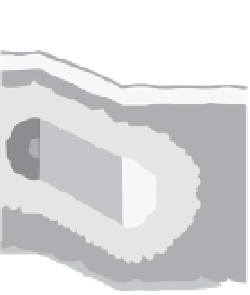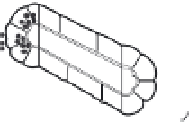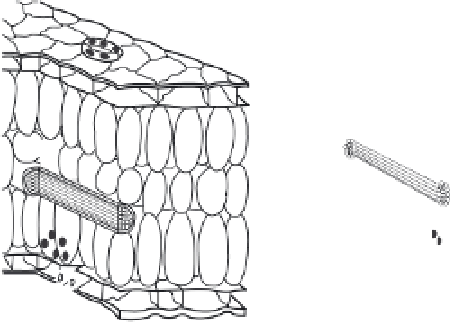Environmental Engineering Reference
In-Depth Information
3.3 (a) Carbon fixation in C
4
plants. (b) Sections through
leaves of C
3
and C
4
species showing their different structures.
From Smil (2002).
and the distribution of C
4
species is associated with rela-
tively high temperatures and low moisture availability.
Corn, sugarcane, and sorghum are the most important
C
4
crops; some of the worst weeds, including crab grass
(Digitaria sanguinalis), also follow this path. A global
comparison of annual phytomass accumulation shows
C
4
plants taking 11 out of the 12 top places (Hatch
1992). Maximum daily growth rates reported for field
crops (all in g/m
2
) range from just over 50 for corn and
sorghum to around 40 for sugar cane, above 35 for rice
and potatoes, 20-25 for most legumes, and just short of
20 for wheat. Atmospheric CO
2
decline during the past
7 Ma favored the C
4
species, whereas rising levels of
CO
2
are tilting the balance once again in favor of C
3
plants. And the line between C
3
and C
4
species is not
that definite: tobacco, a typical C
3
plant, has features of
C
4
photosynthesis in cells of stems and petioles that are
supplied with carbon from the vascular system and from
stomata (Hibberd and Quick 2002).
Crassulacean acid metabolism (CAM) is the other im-
portant modification evolved to minimize H
2
O losses.
Succulents use it to absorb large volumes of CO
2
during
night and, as in C
4
species, to convert it initially into C-4
acids. During the day, with stomata closed, sunlight
energizes decarboxylation of these acids and carbon
refixation via the RPP cycle. These processes, unlike in
C
4
species, are not spatially separated; they take place
at different times in the same cells. Many CAM plants
can totally suspend any gas exchange for weeks, even
months. CAM metabolism has worldwide distribution,
with Crassulaceae being the most important group in
northern hemisphere and Cactaceae in the Americas.
Throughout the tropics there are numerous epiphytic
Orchidaceae and Bromeliaceae, some of them able to







































































































































































































































































































